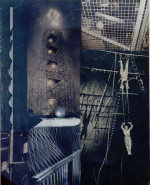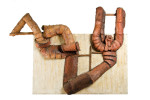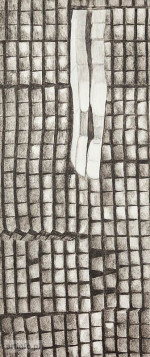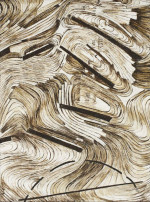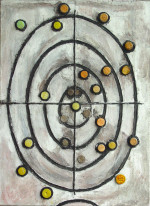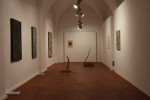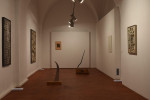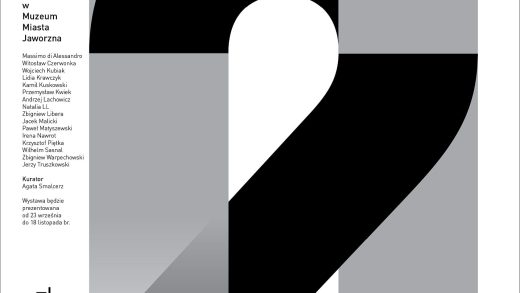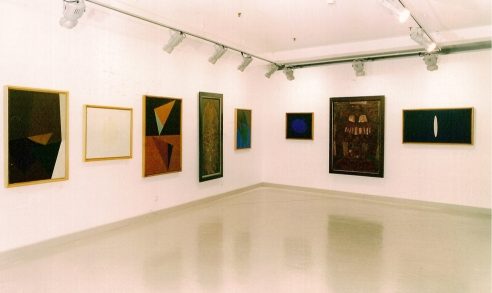opening: 23.11.2018, at 7:00 PM
exhibition: 23.11.2018-21.12.2018
exhibition open Monday-Friday 10:00 AM-6:00 PM
admission always free
curator: Barbara Piwowarska
Organizer:
Galeria Piekary
ul. św. Marcin 80/82
61-809 Poznań
CK Zamek, Dziedziniec Różany

Partner: Fundacja 9/11 Art Space

Media patronage:

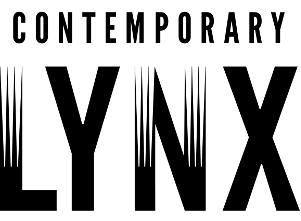

Co-financed by the Ministry of Culture and National Heritage from the Culture Promotion Fund
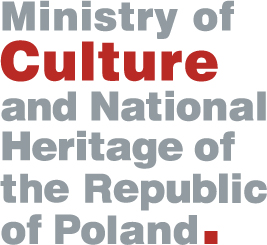
Jadwiga Maziarska (born 1913, died 2003) was a versatile artist, fluent in painting, drawing, sculpture and collage. She experimented with various techniques, but this pursuit must not be understood one-sidedly: not only did she test the repertoire of artistic techniques and tools, but also studied the materiality of the artistic raw product. First and foremost, those were continual assays with the texture of the canvas, paper or textiles. Despite the extensive breadth of interests, the artist took advatange of all, reifying her authorial concept of abstract work, by means of which she sought—in the first place—to expose that which is unattainable to the human eye or eludes the faculties of perception.Hence the themes Maziarska was interested in included organicity, biomorphism of matter, physiology, and the complex structures of nature.
The year 1932 saw her begin higher education; the artist studied at the Faculty of Law and Social Sciences, Stefan Batory University in Vilnius, but other disciplines and sciences drew her attention as well: mathematics, medicine, neurology, and psychiatry. She would develop her interests also through contact with her uncle, professor at the Faculty of Medicine, Jagiellonian University.
Dissatisfied with her major, Maziarska transferred in 1933-1934 to Alfred Terlecki’s Private Painting School, and in 1934 enrolled at the Faculty of Painting, Academy of Fine Arts in Cracow, where she attended the studio of Professor Władysław Jarocki. Among his students at the time, there were Erna Rosenstein and Tadeusz Kantor, with whom the artist established a lasting relationship, not the least because of the leftist leanings which were shared by the members of the Cracow Group and the milieu associated with the Cricot Theatre, led initially by Józef Jarema and, after World War II, by Kantor (Cricot 2). In 1936-1938, Maziarska and other members of the Cracow Group were actively involved in communist organizations. Then, after the outbreak of the war, she worked for the underground, for instance as a clandestine liaison with the Cracow ghetto.
In 1945, Maziarska joined the Young Visual Artists Group, and participated in the Exhibition of Young Visual Artists Group. The same year, she showed her works at the ZZPAP (Trade Union of Polish Visual Artists) Exhibition of Painting and Sculpture, a show held at the Palace of Arts (run by the Society of Friends of Fine Arts) and, in 1945-1946, at the Exhibition of the Independent Ones at the same venue. The following year, works created by Maziarska were seen at the 2nd National Winter Salon of the Association of Polish Visual Artists (ZPAP) in Cracow and the 3rd National Salon of Painting, Sculpture and Graphic Arts in Poznań. At the time, she also became involved in the activities of the Club of Young Artists and Scientists (Warsaw), an undertaking aimed at enabling exchange of ideas between representatives of various branches within art and science; the Club also organized meetings to listen to lectures and debate issues, as well as staged exhibitions to which the artist contributed, such as the Exhibition of Young Visual Artists from Cracow, Łódź, Warsaw, and Poznań.
In 1948, Maziarska appeared with abstract paintings and collages at the momentous First Exhibition of Modern Art held at the Palace of Arts in Cracow, a show organized by the Artists’ Club (composed of Tadeusz Kantor, Maria Jarema, Jonasz Stern, and Jerzy Nowosielski, among others). Next to being a comprehensive review of the oeuvre of the most eminent avant-garde artists in Poland, it was also intended to establish links between Polish art of the nascent communist era and the leading trends in Western art. In 1949, Maziarska collaborated with the Supervisory Office for Aesthetics of Production at the Ministry of Light Industry, designing abstract patterns for textiles. In 1950, the artist painted a several expressive-colouristic compositions in the ‘socialist realist’ vein (e.g. At the steel works, or Building Site Labour) but they did not make it into the First National Exhibition of Visual Artists, as they failed to meet the requirements of official art.
In 1952, she was admitted as Full Member in the Association of Polish Visual Artists (ZPAP), and sat on the Board of the ZPAP, Cracow Chapter, contributing to preparation of exhibitions organized by the latter. In 1953 (and in the years to follow) she would partake in that exhibition programme herself, showing her works during events held at the Palace of Arts in Cracow. From 1954 onwards, Maziarska also employed her talents and skills in stage design, working for the Puppet Theatre attached to the State Theatre of the Opole Region. Being one of the nine artists invited to the 1955 Exhibition of the Nine Painters, she shared the room with Erna Rosenstein; other artists included Tadeusz Brzozowski, Maria Jarema, Tadeusz Kantor, Stanisław Mikulski, Jerzy Nowosielski, Jerzy Skarżyński and Jonasz Stern.
The year 1957 was all about watershed events: the artist joined the Zagłębie Group, while her oeuvre was presented at the very first solo show entitled Jadwiga Maziarska, held at the House of Visual Artists in Cracow. Moreover, she became a co-founder and member of the Second Cracow Group, displayed her works at the Second Exhibition of Modern Art at the Zachęta, and opened yet another solo show, Jadwiga Maziarska, this time in Warsaw. The end of the year saw her take part in the Exhibition of Cracow Group Painting in Szczecin, and leave—on a grant awarded by the Ministry of Culture and Art—for Paris, where she met numerous international artists and established contacts with art galleries.
As for 1958, noteworthy achievements included participation in the show titled Symbolism and Surrealism in Cracow as well as in the 1st Exhibition of Cracow Group Paintings in Cracow, an event inaugurating numerous exhibitions of the group where, in the years to follow, Maziarska would continue showing her works. Jadwiga Maziarska pursued her interests in biology and chemistry further, especially that Andrzej Maziarski, her cousin working at the Institute of Electronics in Warsaw, had access to Poland’s first electron microscope. These experiments inspired the artist’s structural compositions and the characteristic titles of the works.
The aforesaid series of the Cracow Group are the most important events that the artist was involved in in the subsequent years. Her oeuvre was also displayed at the Third Exhibition of Modern Art at the Zachęta (1959), Exhibition on the 50th Anniversary of ZPAP, Cracow Chapter at the House of Visual Artists and the Palace of Arts in Cracow (1961) or Polish Achievement in Plastic Arts on the 25th Anniversary of the People’s Republic at the National Museum in Warsaw (1961); Maziarska also contributed to Confrontations 1956-1962. Her third solo exhibition—under the invariable title of Jadwiga Maziarska—was held at the Krzywe Koło Gallery in 1964. The following year the artist was honoured with the Knight’s Cross of the Order of Polonia Restituta.
In 1969, invited by Michel Tapié—French art critic who coined the term informel, curator and collector—Maziarska exhibited her works in Milan (Galeria d’Arte Cortina) at a show entitled Espaces abstraits. Her oeuvre could also be seen at overview exhibitions in Cracow: the Jubilee Exhibitions on the 150th Anniversary of the Academy of Fine Arts at the National Museum, and Paintings and Painting from Romanticism to Tachisme. Exhibition of Polish Painters from the 19th and 20th Centuries at the Palace of Arts.
As for the most significant career events in the 1970s, Maziarska participated in the 4th Festival of Polish Contemporary Painting (BWA, the National Museum in Szczecin, 1972) and presented her achievement at three solo expositions entitled Jadwiga Maziarska (respectively: Pawilon Gallery in Cracow, 1976; Works from 1948-1977 at the same venue, 1977-1978; Gallery 72 in Chełm, 1978). She also showed her works in Augsburg during 15 Polnische Künstler (Rathaus, Goldene Saal), in Radom: Around the Exhibition of Modern Art (Regional Museum, 1979-1980), Bydgoszcz: Polish Painting 1944-1979 from the Collection of the Regional Museum in Bydgoszcz (Regional Museum in Bydgoszcz; later also in Toruń, 1979, and at the Zachęta in Warsaw, 1981) and Poznań: 35 Years of Painting in People’s Poland (National Museum, 1979, transferred to the Zachęta in 1980).
The 1980s, 1990s and 2000s were an equally intensive period as far as exhibitions were concerned. Speaking of the 1980s, one cannot fail to mention the regularly organized shows in the Cracow Group Collection series; the first of those was held in 1981 at the Krzysztofory Gallery in Cracow (there were six such shows in the 1980s, and Maziarska was featured in of those). The year 1984 saw two more of her solo shows: Jadwiga Maziarska. Painting at the Studio Gallery (Palace of Culture and Science) in Warsaw and Jadwiga Maziarska at the Krzysztofory Gallery. Before the decade came to an end, two further such exhibitions were held: at the University Gallery of Contemporary Art in Cieszyn, 1986, and in 1988-1989 at the Studio Gallery in Warsaw. In 1984, the artist contributed to Artistic Textiles in the 40th Years of the People’s Republic of Poland at the Central Museum of Textile Industry in Łódź. Career highlights in 1985 included Four Women Artists from Eastern Europe. Posters, Prints and Drawings by Barbel Bohley, Teresa Murak, Jadwiga Maziarska, Maria Waśko (Battersea Arts Centre in London) and participation in 63 Künstler aus Krakau. Bilder, Plastiken, Zeichnungen, Grafiken at the Staatstheater in Darmstadt. As for international exhibitions in 1988, one should mention Geometria és Metafora (Budapést Galeria) and Polnische Malerei seit 1945 (Galerie der Stadt Esslingen, Villa Merkel, Esslingen, later transferred to the Kunsthalle in Wilhelmshaven).
In the 1990s Maziarska took part in a number of events which are considered ground-breaking for Polish art: the retrospective Krzywe Koło Gallery at the National Museum in Warsaw, (1990), the collective exhibition Polish Female Artists at the same venue (also shown in Lyon, 1991); two further retrospectives, The Cracow Group 1957-1992 at the Palace of Arts in Cracow (1992) and The Cracow Group 1932-1994 at the Zachęta in Warsaw (1994), the collective Polish Surrealists at the Municipal Gallery of Art in Częstochowa (1995), The Thaw. Art around 1956 at the National Museum in Poznań, designed by Piotr Piotrowski (1996), Generations at the Zachęta and Studio Gallery in Warsaw (1997), Boundaries of the Image. Painting in 1990s Poland at the Centre for Contemporary Art Ujazdowski Castle in Warsaw (1997) or First Exhibition of Modern Art. Fifty Years Later at the Starmach Gallery in Cracow (1998). Maziarska also had several solo exhibitions in the 1990s: Jadwiga Maziarska (Works from 1948-1991), Palace of Arts in Cracow (1991), Jadwiga Maziarska. New Paintings, Zderzak Gallery in Cracow (1994), Jadwiga Maziarska. Secrets from the East. Bilder aus fünf Jahrzehnten, Polish Institute, Galerie am Gestade in Vienna (1998), Jadwiga Maziarska. Planes of Spaces, Spaces of Planes. Paintings from 1946-1991, Gallery U Jezuitów in Poznań (1998), Jadwiga Maziarska. Photomontages, Paintings, Painterly Inspirations, Krzysztofory Gallery in Cracow (1998).
These were followed in the early 2000s by such exhibitions as The Modern Ones and Socialist Realism at the Starmach Gallery in Cracow (2000), Modernists 1948-1954 at the Zachęta in Warsaw (2000) and solo shows, Exhibition of Painting by Jadwiga Maziarska – Recipient of the 2001 Jan Cybis Award, an exposition celebrating the winner of the accolade at the DAP Gallery in Warsaw (2002), as well as Jadwiga Maziarska. A Monographic Show, Municipal Gallery of Art Extravagance in Sosnowiec (2002).
After the artist’s passing, several posthumous exhibitions were organized, the most important of which was a retrospective focusing on the interpictorial and intermedial links in her oeuvre, entitled Jadwiga Maziarska. Atlas of the Imaginary, held at the Centre for Contemporary Art Ujazdowski Castle in Warsaw (2009).

